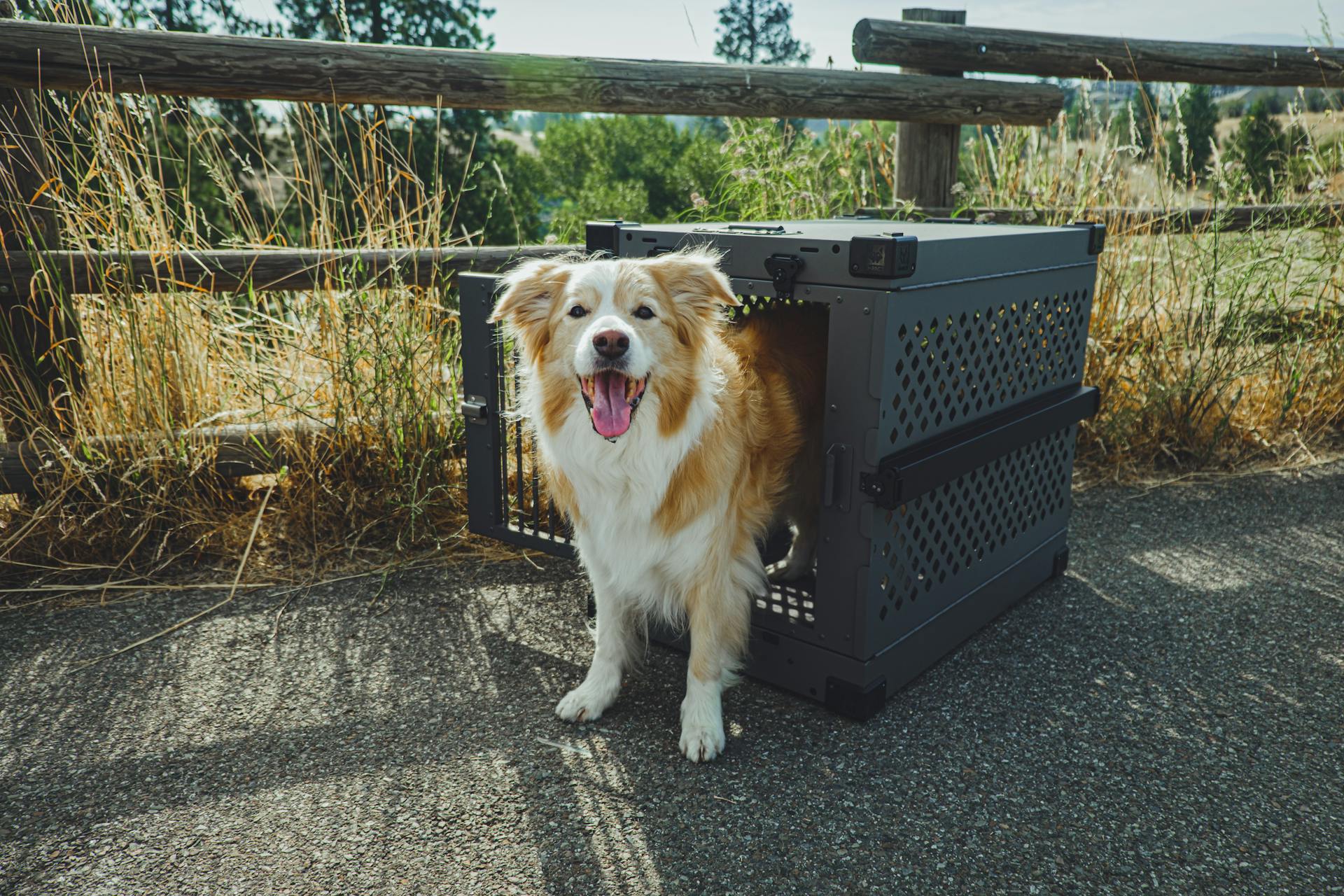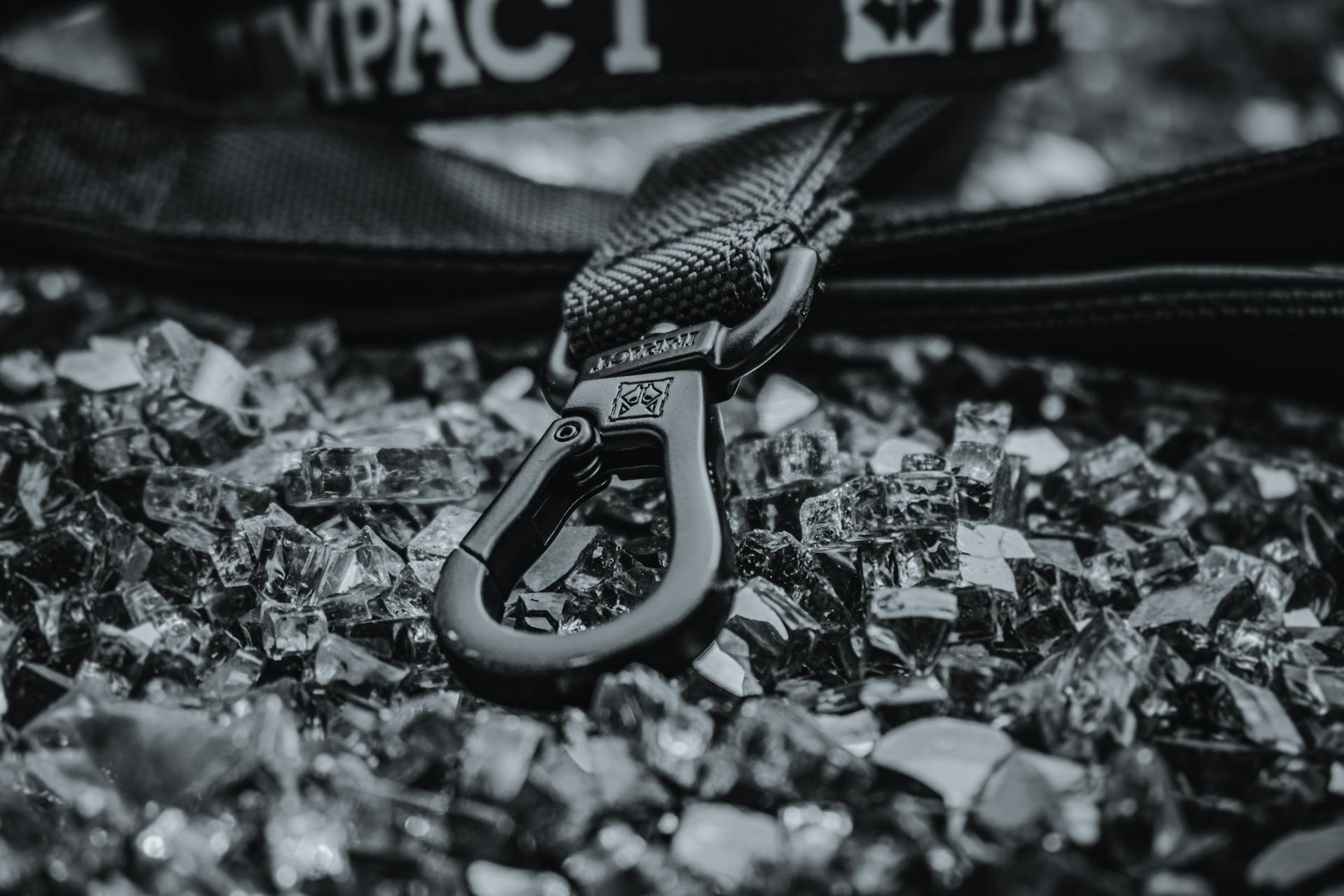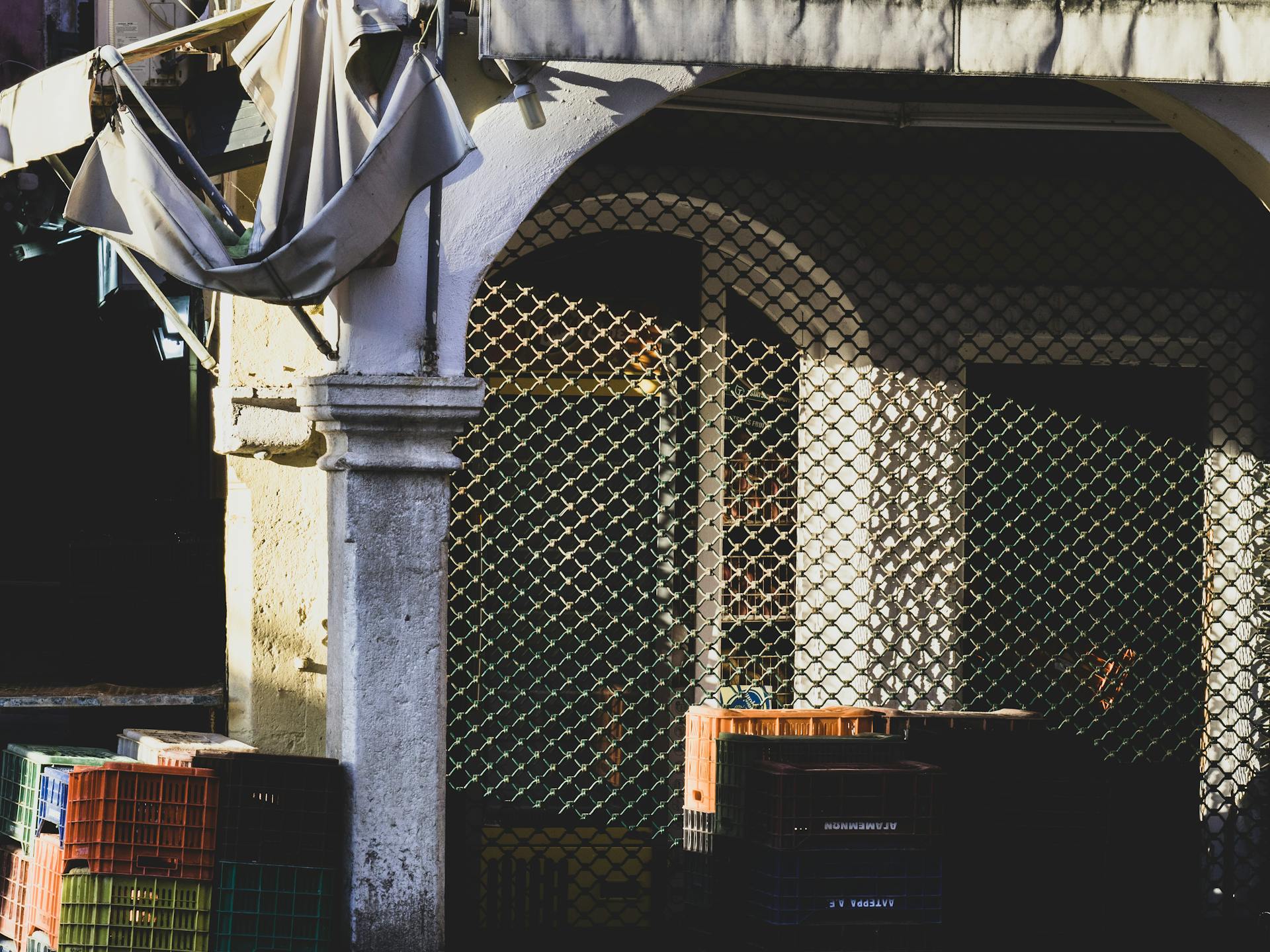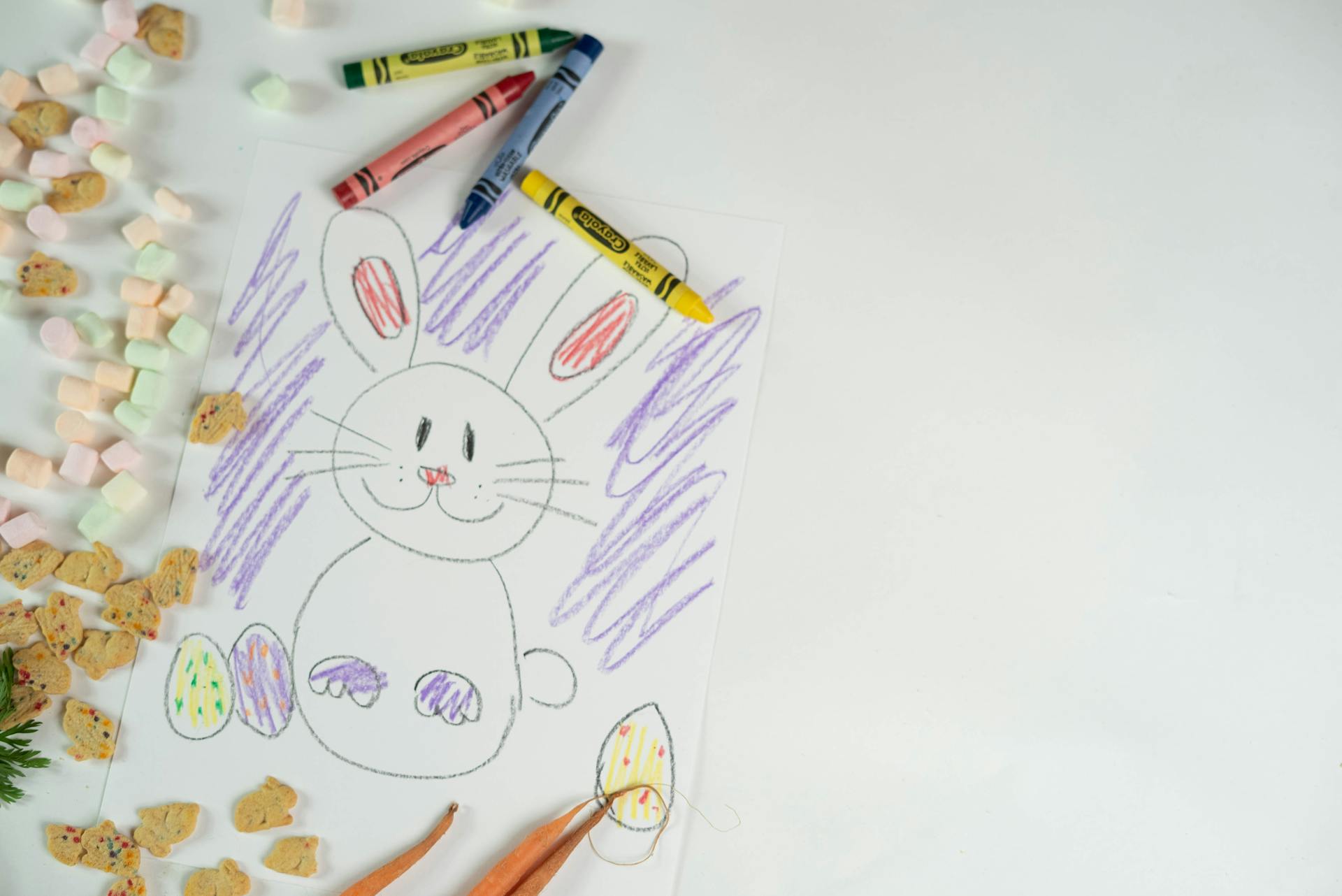
Crate training can be a game-changer for potty training your puppy. By introducing a crate early on, you can establish a routine that makes it easier for your dog to learn to hold their bladder and bowels until they're taken outside.
A crate is essentially a small, enclosed space that provides a safe and comfortable area for your dog to relax. Crate training helps prevent accidents by giving your dog a designated space to hold their bladder and bowels until you can take them outside.
The size of the crate is crucial, as it should be just large enough for your dog to stand up, turn around, and lie down comfortably. A crate that's too small can be uncomfortable for your dog and may even lead to accidents.
By following a consistent routine and using a crate, you can help your dog learn to hold their bladder and bowels until they're taken outside, making potty training a much smoother process.
Creating a Puppy Schedule
A consistent puppy schedule is crucial for housetraining success, as puppies have tiny bladders and can't hold it for long periods. Puppies can control their bladders for the number of hours corresponding to their age in months up to about nine months to a year.
You should take your puppy out every 1-2 hours to prevent accidents, and more frequently during playtime or after eating. For young puppies, take them out: first thing in the morning and last thing at night, after playing indoors, after spending time in a crate or upon waking up from a nap, after chewing a toy or bone, eating, or drinking.
Here's a rough guide to help you plan:
Keep in mind that every puppy is different, and you should adjust the schedule accordingly. With consistent training and patience, your puppy will learn to hold it in no time.
For more insights, see: Puppy Mill Dogs Behavior
Understanding Puppy Behavior
Puppies have tiny bladders and can only hold their urine for a number of hours corresponding to their age in months up to about nine months to a year. This means a 6-month-old puppy can reasonably be expected to hold it for about 6 hours.
You should monitor daily events and your puppy's habits when setting up a schedule. This will help you understand their individual needs and rhythms.
Puppies need to be taken out frequently, especially when they're young. You should take your puppy out:
- First thing in the morning and last thing at night
- After playing indoors
- After spending time in a crate or upon waking up from a nap
- After chewing a toy or bone, eating, or drinking
A good rule of thumb is to take your puppy out every hour or two, depending on their age and individual needs. This can be a lot to manage, especially if you work in-person, but it's essential for successful potty training.
Some puppies can learn to hold their bladder for longer periods of time, while others may need to go out more frequently. This is because every puppy is different and has their own unique habits and rhythms.
To help your puppy learn to hold their bladder, it's essential to establish a consistent routine and stick to it. This will help them understand what is expected of them and when it's time to go potty.
A fresh viewpoint: Do Dog Diapers Help with Potty Training
You should also be aware of your puppy's individual signals and rhythms. Some puppies may be able to hold it longer than others, while some will have to go out every time they play or get excited.
Here are some common signs that your puppy needs to go potty:
- Sniffing or circling
- Whining or barking
- Squatting or lifting their leg
- Looking for a quiet spot to go
By paying attention to these signs and establishing a consistent routine, you can help your puppy learn to hold their bladder and become a well-trained member of your family.
Accidents and Cleaning Up
Accidents will happen, especially if you're house training a little dog. Some owners even recommend teaching puppies to use indoor potty spots, similar to a cat's litter box.
Consistency is key when it comes to cleaning up after accidents. Trainers say that with consistency, you can house train a little dog, it just may take a little additional time, attention, and effort.
It's essential to clean up accidents thoroughly to prevent accidents from happening again. You can use piddle pads or actual dog potty boxes for indoor use to make cleanup easier.
Remember, accidents are an opportunity to retrain and reinforce good habits. With patience and persistence, you can help your dog learn to go potty outside where they belong.
Suggestion: How to Use a Flirt Pole
Training Your Puppy
Training your puppy requires patience, consistency, and a clear understanding of their needs. Puppies have tiny bladders and can only hold their urine for a certain number of hours corresponding to their age in months.
A good guide to follow is that dogs can control their bladders for the number of hours corresponding to their age in months up to about nine months to a year. For example, a 6-month-old puppy can reasonably be expected to hold it for about 6 hours.
To establish a housetraining schedule, monitor daily events and your puppy's habits. With very young puppies, you should expect to take them out: first thing in the morning and last thing at night, after playing indoors, after spending time in a crate or upon waking up from a nap, after chewing a toy or bone, eating, or drinking.
This may require frequent trips outside, especially in the first few months. If you work in-person, make arrangements to keep up with the schedule, such as hiring a dog walker or asking a friend to stop by.
Additional reading: Crate Training First Night
Some puppies may pick up housetraining quickly, while others may take months. Factors such as age, learning history, and consistency of training can affect the speed of learning.
A crate can be a valuable tool in housetraining, providing a safe space for your puppy to relax and learn to hold their bladder. Dogs don't like to soil the area they sleep in, so a crate helps puppies learn to hold their bladder for longer periods of time.
Here are some general guidelines for crate training:
- Keep the crate in a quiet, safe space, such as your bedroom or a nearby hallway.
- During the day, place the crate in the room where you and your family spend the most time.
- Never use the crate as punishment.
- Train your puppy in small steps, avoiding forcing them into the crate if they're not ready.
A simple tip is to give your dog a potty break before putting them in the crate, and don't forget to take them outside immediately after letting them out. This is especially important for puppies, whose "hold time" is still developing.
Here's a rough estimate of how long puppies can hold their urine:
Remember, every puppy is different, and their hold time may vary.
Puppy Care and Supplies
To crate train your puppy effectively, you'll need the right supplies. A simple crate mat is a good choice for pups still acclimating to the crate, as it's easy to clean and won't absorb urine.
Treats play a crucial role in the crate introduction process. Small savory treats, like Wellness Soft Puppy Bites Lamb & Salmon Recipe Grain-Free Dog Treats, help reinforce the idea that good things happen inside the crate.
Busy toys can help keep your pup focused and happy until they drift off to sleep. Treat-stuffable toys like the KONG Classic or a West Paw Zogoflex Small Tux Tough Treat Dispensing Dog Chew Toy are great options, but be sure to test their durability before leaving your dog alone with them.
If this caught your attention, see: Is Crate Training Good for Dogs
Create a Puppy Schedule
Creating a schedule for your puppy is crucial for successful housetraining. Puppies have tiny bladders and can't hold it for long periods of time, so you need to take them out frequently.
A good guide is that dogs can control their bladders for the number of hours corresponding to their age in months up to about nine months to a year. For example, a 6-month-old puppy can reasonably be expected to hold it for about 6 hours.
You should monitor daily events and your puppy's habits when setting up a schedule. Very young puppies need to be taken out:
- First thing in the morning and last thing at night
- After playing indoors
- After spending time in a crate or upon waking up from a nap
- After chewing a toy or bone, eating, or drinking
This can be a lot of trips outside, so you might need to make arrangements for someone to take your puppy out while you're away.
Supplies Needed
Having the right supplies is essential for a happy and healthy pup. You'll need a crate, but it's not just about the crate itself.
A simple crate mat is a good choice for puppies still acclimating to the crate. Avoid extra-plush dog beds, as they might absorb urine and make it difficult to tell if your dog has had an accident inside.
Treats are an important part of the crate introduction process. Small savory treats, like Wellness Soft Puppy Bites Lamb & Salmon Recipe Grain-Free Dog Treats, help reinforce the idea that good things happen inside the crate.
For dogs with tons of energy, like puppies, toys can be a challenge. Busy toys, like treat-stuffable toys, help keep them focused and happy until they drift off to sleep.
Here are some crate training supply essentials:
- Bedding: A simple crate mat is a good choice
- Treats: Small savory treats, like Wellness Soft Puppy Bites Lamb & Salmon Recipe Grain-Free Dog Treats
- Toys: Busy toys, like treat-stuffable toys, like the KONG Classic or a West Paw Zogoflex Small Tux Tough Treat Dispensing Dog Chew Toy
Storage Options
For a puppy, you'll want to keep their crate in a quiet spot, but not so far away that they feel isolated. A corner of the living room or dining room is a great location.
You'll also want to consider the crate's proximity to your bed, especially at night, so you can hear your puppy ask to go out. This is especially important for young puppies who need to go out for a potty trip at least once before morning.
If you can't keep the crate in your bedroom, a dog monitor near the crate can be a lifesaver, allowing you to hear when your puppy needs a potty trip.
Suggestion: Training Dog to Ring Bell to Go Out
Housebreaking Strategies
Crate training is an effective way to housebreak your puppy, especially during the early stages of potty training.
Establish a routine and stick to it, taking your puppy outside to the designated potty area immediately after meals, naps, and playtime.
This helps your puppy learn to associate these activities with the need to go outside.
Consistency is key, so make sure all family members are on the same page when it comes to the schedule and potty areas.
Puppies can hold their bladder for about 1-2 hours, so be prepared to take them outside frequently, especially during the first few months.
A good rule of thumb is to take your puppy outside every hour, or immediately after they wake up from a nap.
Crate training helps prevent accidents in the house by giving your puppy a designated area to hold it until you can take them outside.
Broaden your view: Why Are German Shepherds so Clingy
General Puppy Information
Puppies have tiny bladders and can't hold their urine for long periods. A good rule of thumb is that dogs can control their bladders for the number of hours corresponding to their age in months up to about nine months to a year.
As a puppy owner, it's essential to monitor daily events and your puppy's habits when setting up a schedule. You should expect to take your puppy out frequently, especially with very young puppies.
You'll need to take your puppy out after playing indoors, after spending time in a crate or upon waking up from a nap, after chewing a toy or bone, eating, or drinking. This can be a dozen times or more in a 24-hour period, so make sure you have a plan in place.
A 6-month-old puppy can reasonably be expected to hold it for about 6 hours. However, this can vary depending on individual puppies, so be prepared for adjustments to your schedule.
Here's a rough guide to help you plan your puppy's potty breaks:
Keep in mind that these are just estimates, and you should adjust your schedule based on your puppy's individual needs and habits.
Frequently Asked Questions
Should I put a pee pad in my puppy's crate at night?
No, don't put a pee pad in your puppy's crate at night, as it can hinder their natural instinct to hold their bladder and make toilet training more challenging. Instead, consider using puppy pads on the floor or other alternatives
How do I stop peeing and pooping in my crate?
To stop peeing and pooping in your crate, use positive reinforcement by praising your dog when they poop outside and negative reinforcement by clapping "No" and taking them outside when they try to do so in the crate. Consistently following this routine can help your dog learn to eliminate outside.
How do you stop a dog from peeing and pooping in the house?
Take your puppy to their designated outside bathroom spot immediately and praise them when they finish. Clean up any accidents thoroughly without punishing your puppy, and reward them for successful elimination outside.
Sources
- https://www.akc.org/expert-advice/training/how-to-potty-train-a-puppy/
- https://www.akc.org/expert-advice/training/potty-training-your-puppy-timeline-and-tips/
- https://www.petmd.com/dog/general-health/crate-training-puppies
- https://be.chewy.com/how-to-crate-train-a-puppy-a-step-by-step-guide-from-an-expert/
- https://www.playtimepaws.com/crate-training-how-why/
Featured Images: pexels.com


